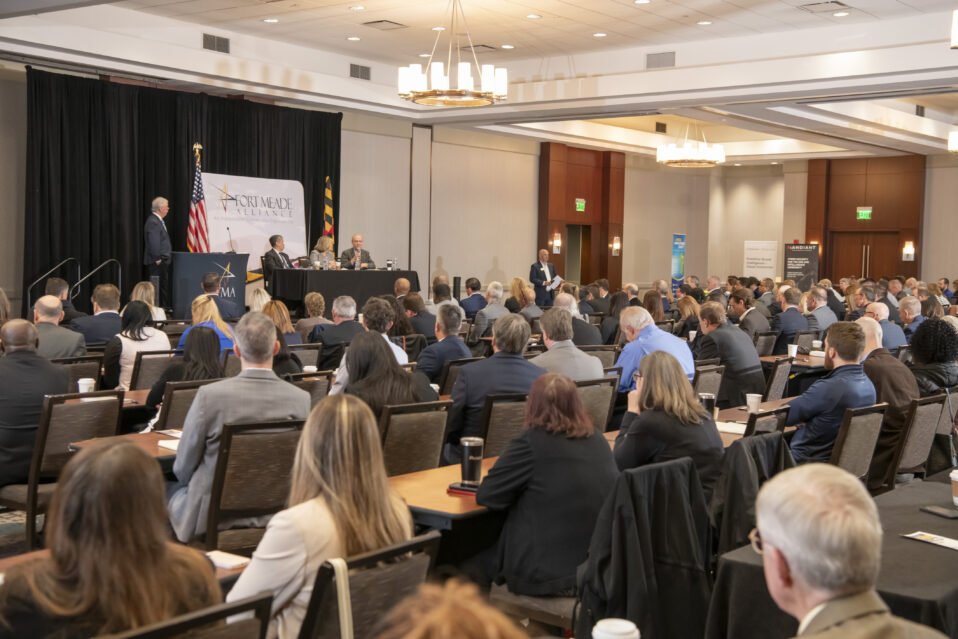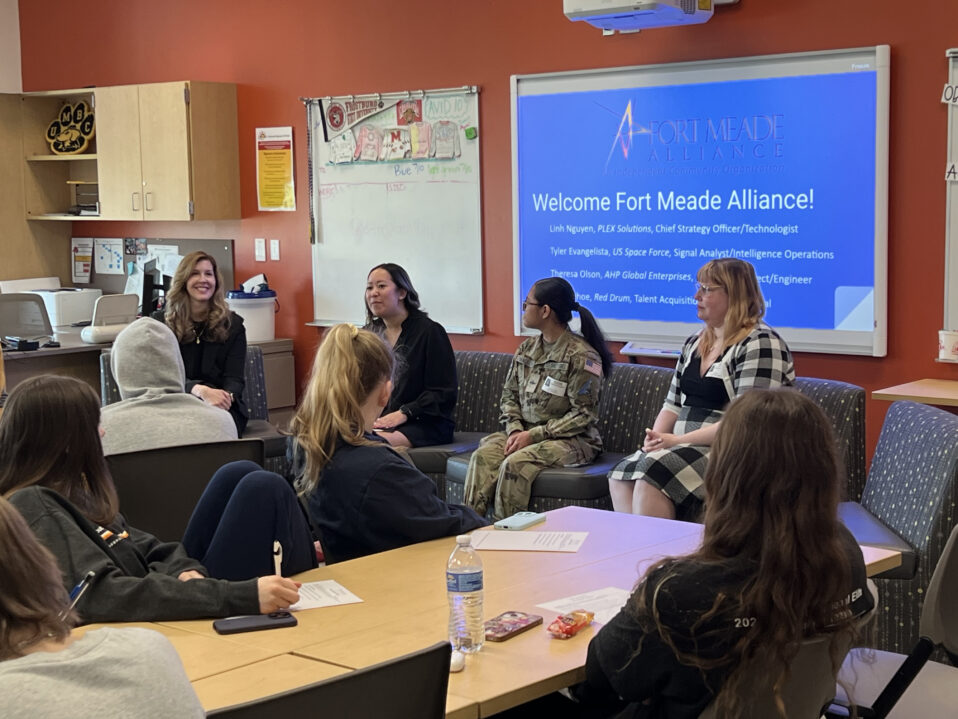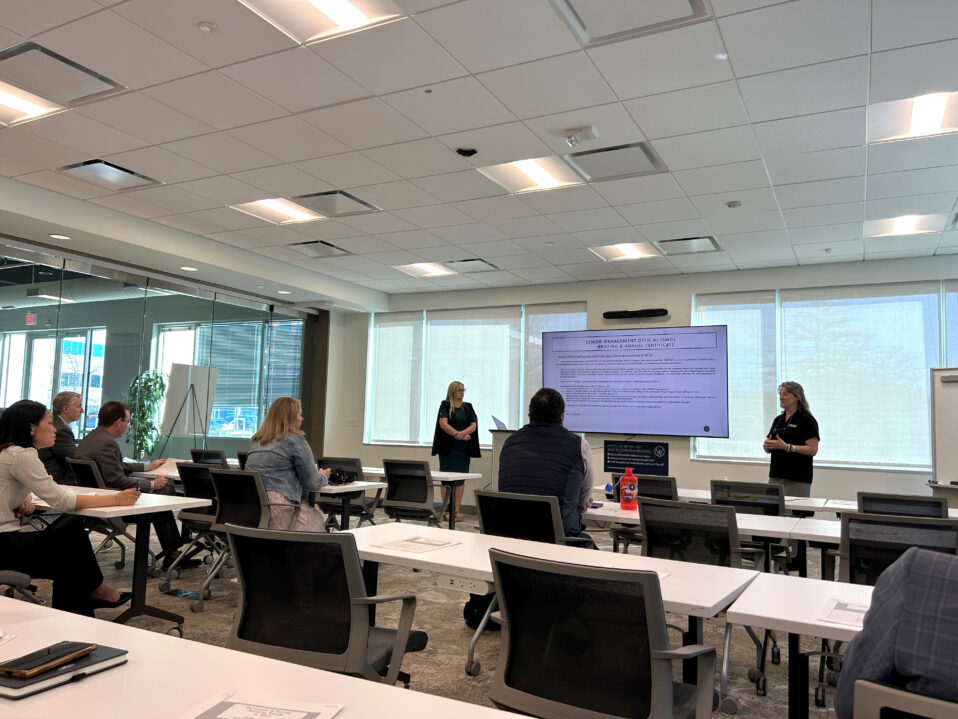 Inspiring a teenager who is struggling with math, lacking financial resources and waffling about career choices, to dig into a daunting course of studies in order to become a STEM professional is understandably challenging. Now consider tackling that challenge in the mid-pandemic, socially distanced, technologically demanding world of virtual education.
Inspiring a teenager who is struggling with math, lacking financial resources and waffling about career choices, to dig into a daunting course of studies in order to become a STEM professional is understandably challenging. Now consider tackling that challenge in the mid-pandemic, socially distanced, technologically demanding world of virtual education.
That was the prospect facing developers of Anne Arundel County’s inaugural session of STEM Core Bridges. The summer program brings rising seniors, high school and community college instructors, and STEM professionals together five days a week for six weeks to study mathematics, complete project-based learning in STEM fields and learn about STEM careers from established professionals. The Fort Meade Alliance – which was instrumental in bringing STEM Core to Maryland, establishing a program at the Community College of Baltimore County and creating a STEM Core Bridges program for high school students in Baltimore City – secured a grant to expand the program to Anne Arundel County.
When COVID-19 forced schools and colleges to terminate in-person instruction, however, the STEM Core Bridges team needed a new plan.
“It’s no secret that virtual education is not as good,” said Justin Serota, Computer Science Resource Teacher with Anne Arundel County Public Schools. “We knew that a virtual program would be much more challenging so we would have to be flexible and use different strategies. We didn’t want students to be staring at a screen six hours straight. Even adults can’t handle that.”
The team devised alternate instruction plans that included live instruction, guest lectures, ice breakers, games and interactive projects, and breakout rooms where students could collaborate or get personal assistance from an instructor. There would be assignments and other asynchronous activities that students could complete offline any time during the day. Since connecting with students (especially students you have never met) is more difficult online, the team added two high school math teachers to provide individual instruction and contracted Dr. Petal Sumner, a Baltimore City Community College mathematics professor who has run a STEM Core Bridges program in the city, to lead the math instruction.
Students will spend most afternoons working on computer science and engineering projects supplied by computer science faculty from Anne Arundel Community College and professionals from Lockheed Martin and NASA’s Goddard Space Flight Center.
“Whenever you do project-based learning, kids really find themselves. They find their skills and their interests,” Serota said. “It also helps kids understand the thought processes behind algebra and pre-calculus and how important those are to STEM careers. That’s a major benefit for kids.”
The STEM Core Bridges team selected 20 students from Meade and North County high schools to participate in the program.
“The idea was to target students who are not self-identifying as wanting to pursue a STEM career necessarily. They are the low flyers, the kids who are doing alright in math and maybe they’re interested in coding but they aren’t necessarily pursuing it academically. We’re trying to engage those students,” said Jenn Munt, Education and Workforce Director with the Fort Meade Alliance.
With funding from the Anne Arundel County Workforce Development Corporation (AAWDC) and the California based non-profit Growth Sector, the program will provide all needed materials and also pay the students $11 an hour, 5.5 hours per day for the six weeks.
“There are so many low-income students who can’t engage in academic summer camps or other types of enrichment that look good on college applications, because they have to have a summer job to earn money to help support their families,” Munt said. “By paying students, this program allows them to do both.”
That paycheck furthers the goals established by Growth Sector when it created the STEM Core program.
“STEM Core was set up to address the barriers that prevent under-represented students from getting STEM degrees and moving into STEM jobs,” said Dave Gruber, Co-founder.
One barrier is math. Nearly 70 percent of students entering community college have Grade 8 math or less “and that gap alone prevents the majority of students from ever getting into a STEM pathway,” Gruber said. “The second barrier is a lot of students have no idea what the opportunities are in the job market or what the degree pathways are to get those jobs.”
STEM Core Bridges, Sumner said, “can have a great impact on building students’ confidence and their ability to do math. It’s also a great opportunity for students to have access to engineers from NASA and Lockheed Martin, hearing about their experiences and the different paths they took to their careers. Students learn that no matter where you come from, you can get there too.”
The Anne Arundel program will continue to offer services to students after the summer session ends.
Throughout the upcoming school year, AAWDC will provide students with wraparound services, including job-readiness training, career coaching and internships.
“We will be staying in touch with these kids and we will be seeing them through to their success,” said Milena Kornyl, Vice President of Career Development and Community Services.
Anne Arundel Community College is hoping to offer students an Introduction to Pre-Calculus class in the fall and a Pre-Calculus class in spring, which would earn the students both high school and college credit, said Beth Anne O’Reilly, AACC STEM Core Coordinator. “Students who participate in the STEM Core Bridge program this summer will also automatically be accepted into the STEM Core program at AACC.”
That program provides students with accelerated mathematics instruction and tutoring, aid from a Student Support Specialist (who can help with academic, financial and other issues), and a STEM summer internship after their first year in college.



